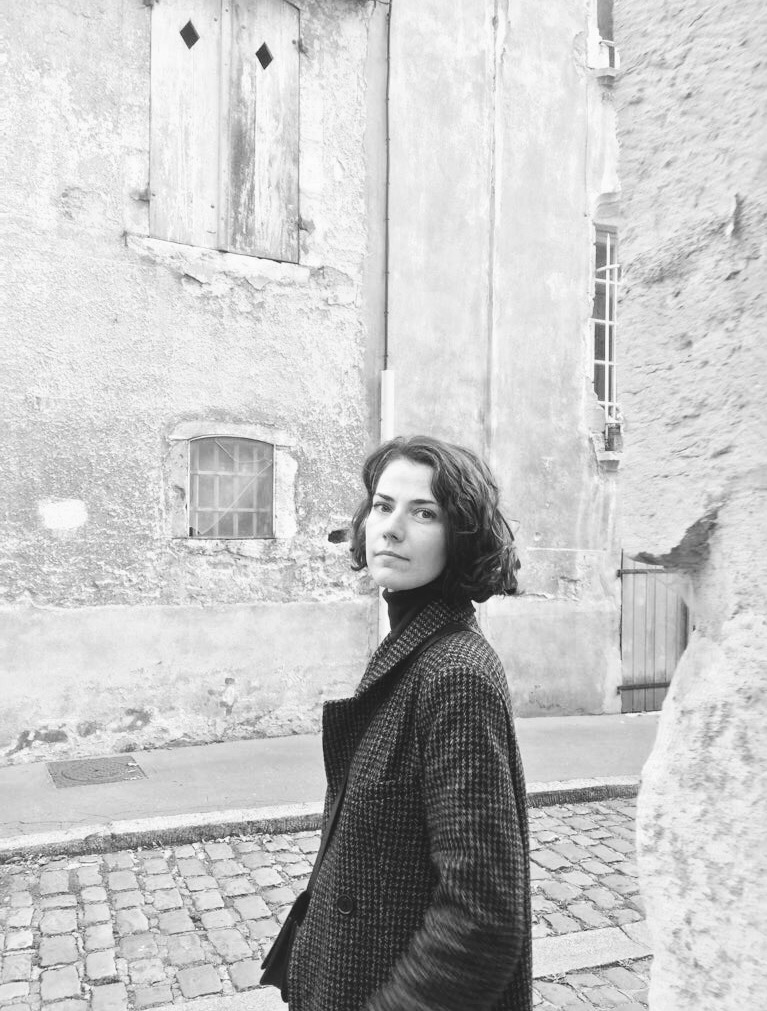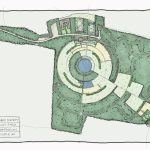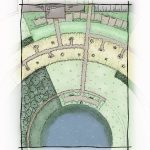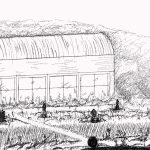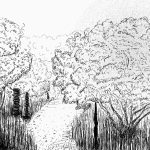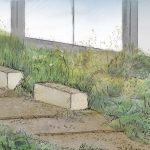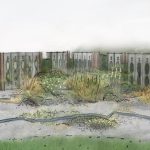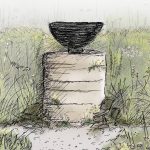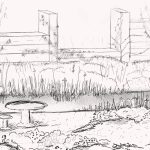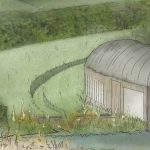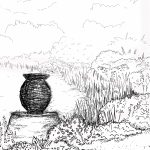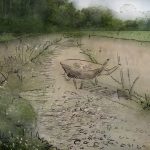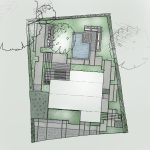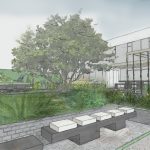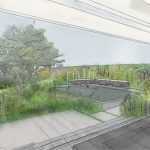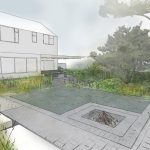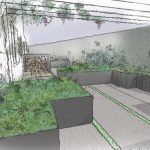Sarah Jeffrey
My gardens are designed boldly but hold themselves lightly. They are contemporary explorations inspired by classic garden forms which gives them a fresh but timeless quality. Characterised by a focus on richly textured planting and a delicate palette with striking traditional elements, I am interested in my gardens telling a story reaching from the past into the present day. They are always site-specific, meaning I explore the history and context of each site in parallel with the current needs of the client to create designs that could only exist for a particular location. Furthermore, it is also an absolute priority that my gardens create sustainable spaces that work for people and the planet.
I graduated with a distinction from the London College of Garden Design.
Biography:
My work as a ceramicist has helped me to develop a strong feel for materiality, form and function and my works in clay are raw, tactile explorations of traditional ceramic sculptures and structures. This tendency to take inspiration and extrapolate from classic forms with a keen eye for texture and tone has become central in my approach to garden design.
For over a decade I also worked as a service designer and innovation manager, running large design-led programmes for the third sector and public sector. This focus on user-centered design and project management has provided a great base of professional skills for my garden design practice and I am delighted to be able to combine this with my creativity to develop spaces that are both beautiful and meaningful.
Instagram – @sarahjeffrey_gardens
Clay Farm is a 21 acre creative retreat which supports ceramicists with young children by providing beautiful outdoor spaces in which they can:
– Think and seek inspiration
– Develop individual work
– Develop collective or group work
– Show and sell work
– Enjoy time as a family and a community
– Learn and play
Turning out from a central round clay pond, the landscape flows and fragments like the ripples from a potter’s wheel:
– Generating volume out of a flat, open site
– Reclaiming the land for plants, trees and wildlife from its agricultural heritage
– Creating beauty out of broken and reused materials
– Defining spaces to come together and to be alone
– Developing playable spaces for young children and their adults
Inspired by the partially excavated layers of the Helicon mosaic at the nearby Aldborough Roman Site, this family garden in North Yorkshire explored a modern, subtle and ‘Yorkshire’ spin on classical Roman garden areas such an impluvium pool, atrium entertaining area and ambulatories through a woodland area. With hazy, soft planting contrasting with denser, more structured shapes and a warm rich palette, the garden uses:
– Strong layers with contrasting textures inspired by the excavations
-Repeated tesserae shapes punctuating the garden, at different sizes and levels
-Figure of 8 linked curves found in the original mosaic
-Gaps, incomplete’ areas and pauses created in the hard and soft landscaping
-Use of trees to create and indicate former structures
The garden for this mid-century house on the edge of the Chilterns was inspired by the textures and intricacies of the mid-century ‘Ark panels for Temple B’nai Israel’ by Anni Albers, the restrained use of materials and lush planting of Geoffrey Bawa’s Tropical Modernism in Sri Lanka and the strong horizontal and vertical forms and use of social spaces showcased through Desert Modernism in the USA.
Together they created a garden defined by linear stripes and freeform curves, regularity and irregularity of spacing, strong contrasts between highly textured and smoother, simpler areas and a limited colour and restrained material palette.
